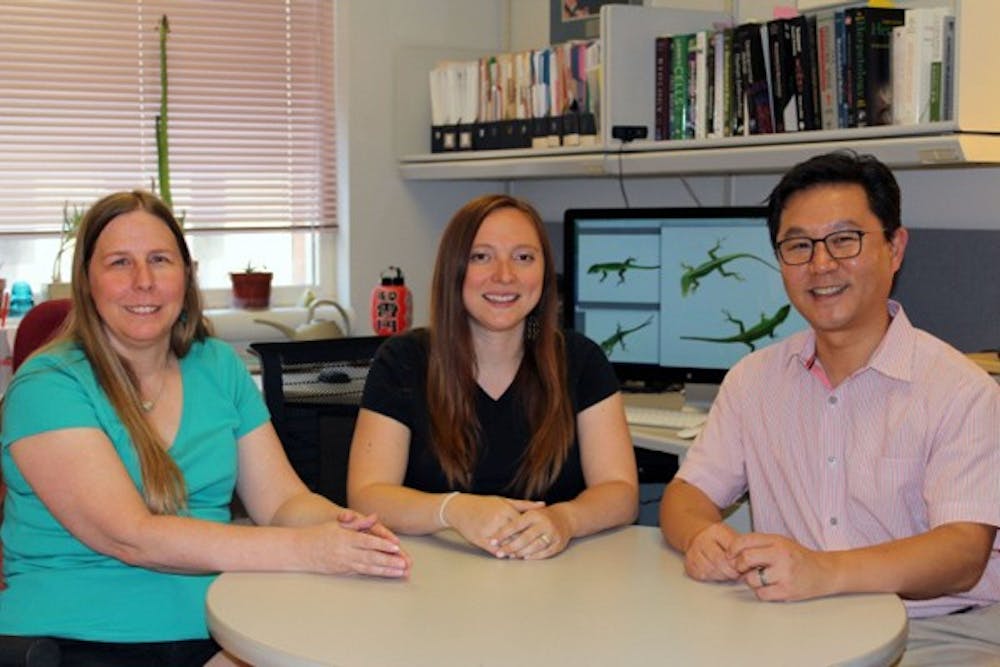 Pictured from left to right researchers Jeanne Wilson-Rawls, Elizabeth Hutchins, Kenro Kusumi. (Photo courtesy of Joel Robertson)
Pictured from left to right researchers Jeanne Wilson-Rawls, Elizabeth Hutchins, Kenro Kusumi. (Photo courtesy of Joel Robertson)A group of ASU researchers made a great stride in the realm of biology last month by mapping the genome of the green anole, a small lizard found in the southeastern U.S., and identifying 326 genes that enable it to lose and then regenerate its tail.
After nearly six years of research, these findings were published for the first time Aug. 20 via the online database PLOS One, and they suggest a bright future in medicine for those suffering from disabilities such as spinal cord injuries and birth defects.
Jeanne Wilson-Rawls, a biology professor at ASU who participated in this research and co-authored the paper, said this research is vital to future medical advancement.
“I think that trying to understand the genetics of regeneration in any system is important if we want to develop new therapies, understand wound healing, etc.,” Wilson-Rawls said.
ASU Professor Kenro Kusumi, who co-authored the paper, said he planned to apply this research in re-growing spinal cords in the distant future, which might eventually lead to a cure for paralysis.
In the more immediate future, however, he said he plans to work toward this goal by using drugs to increase the expression of regeneration genes in mice.
Kusumi said this is likely to happen within the next five years.
These goals are possible because of great genetic similarities in lizards, mice and humans.
“Most people’s views are like, ‘This is like Spiderman or something,’” he said.
But while limb regeneration in humans is still the stuff of science fiction, Kusumi said it would likely become a reality within our lifetimes.
Kusumi said the six-year research process leading up to the publication of the new paper had been long and strenuous, but he enjoyed it overall.
He said his favorite part of the research was being being surprised by the growth pattern in a lizard's regenerating tail.
“It’s not a mass of goo, and it’s not like a plant, where it’s just growing at the tip,” he said of a regenerating tail. “It’s more like a balloon, where all of it is stretching and growing. It’s like building a house. You don’t just build up.”
Elizabeth Hutchins, an ASU doctoral candidate who has played a significant role in the research, said she has liked all the positive feedback the project has received.
She clarified that the majority of responses to the research had been from outside the scientific community and said it might take a bit longer to hear more informed responses from other researchers within the scientific community.
“I’ve always thought it was interesting and of great value to the scientific community, and it’s validating to see the positive response that we’ve gotten so far,” she said of the research. “It’s not just me that thinks it’s interesting; the general public does as well. It’s very rewarding to see that after working on a project for four years.”
Reach the reporter at megann.phillips@asu.edu or follower her on Twitter @megannphillips




